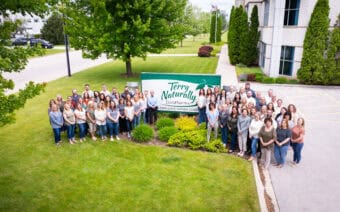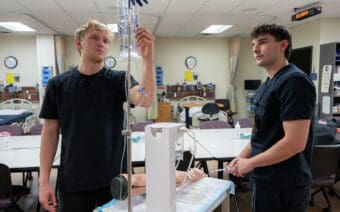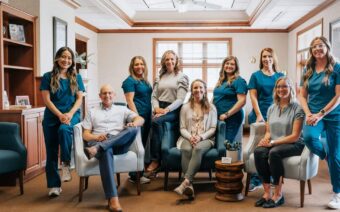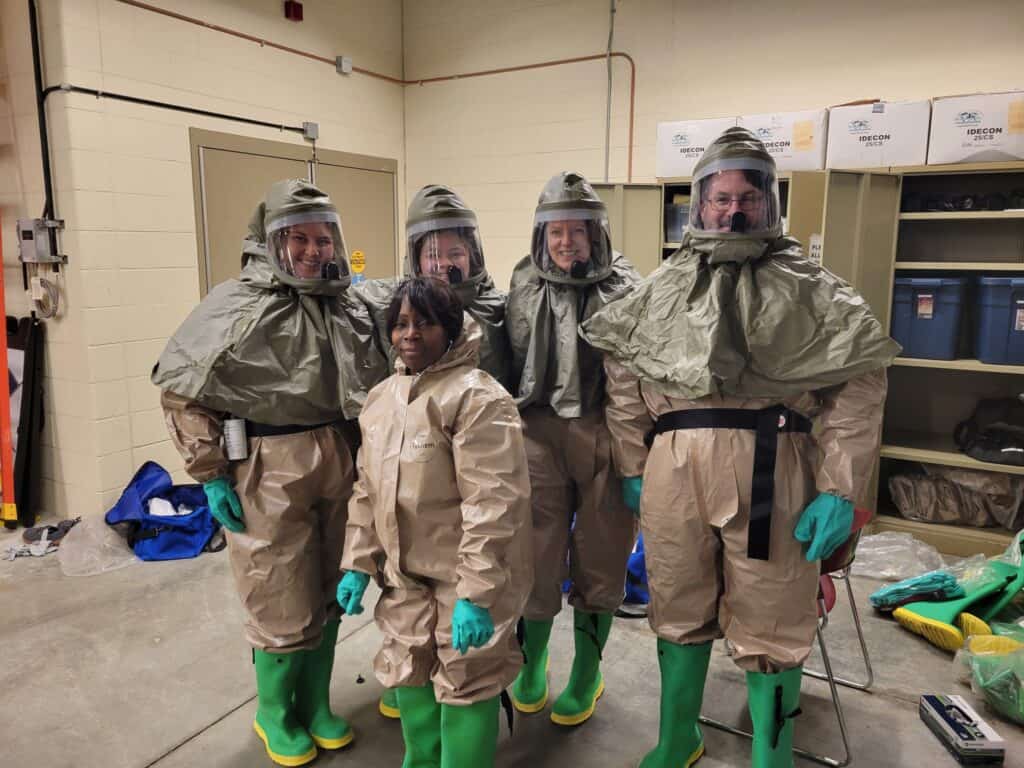
May 19, 2025
NORTHEAST WISCONSIN – Jennifer Luer, system director of employee safety and well-being, said SSM Health’s safety culture is built on a simple premise: “When employees are physically and psychologically safe and taken care of, they can best care for patients.”
Luer said that mindset recently drew accolades from the Wisconsin Safety Council, which honored SSM Health Wisconsin with a Workplace Safety Award – in the medium/large Agriculture, Transportation, Utilities and Other category.
At SSM Health, she said, “everyone owns safety.”
Luer said that sense of ownership reflects the maturity of the safety culture throughout the Midwest-based, not-for-profit health system.
In Wisconsin, she said that includes seven hospitals, 243 physician offices and outpatient sites, eight post-acute care facilities, one health express clinic and 12,400 employees (4,000 hospital-based).
At SSM Health, Luer said safety includes physical safety, mental health support and educational advancement within a culture of continuous improvement.
Per wisafetycouncil.org, the awards, now in their 31st year, honor businesses for exemplary safety records and excellence in safety and health management.
The Wisconsin Safety Council recognized businesses that have gone to “extensive measures” to ensure their most valuable asset – their employees – are safe on the job.
In addition, it celebrates the healthcare organization’s commitment to fostering a culture of safety and ensuring the well-being of everyone who enters its facilities.
And though the high regard for safety permeates the healthcare group’s entire system, Luer said the Wisconsin region chose to submit an application for the award to celebrate its hard-won wins during the past few years.
All-in approach
SSM Health’s definition of safety and well-being – according to its website, ssmhealth.com – is a broad one: emergency preparedness, workplace violence, security, Care for the Caregiver Program, safe patient handling, strains/sprains/falls prevention, ergonomics and more.
And though many of the employees involved report to Luer – as well as Diana Quinn, regional director of safety and emergency preparedness – Luer said the work transcends several teams.
“It’s a diverse group of people who may not have ‘safety’ in their titles, but who do a lot of important work,” she said.
As it should be, Luer said, because safety requires an all-in approach to be a fundamental aspect of the culture.
To encourage this mindset, she said the region offers a Wisconsin employee safety work group and each hospital has its own employee safety committee comprised of cross-functional team members.
Luer said safety information flows both up and down – from the committees to the group and vice versa.
SSM Health’s operating model, she said, includes hosting tiered escalation huddles, in which safety is a prominent part.
Luer said these forums encourage sharing and reporting – for example, leaders report all DART (an acronym for “days away, restricted or transferred”) incidents and any significant injuries during their hospital’s Tier 2 safety huddle.

That info, she said, is then escalated through the Wisconsin region tiered escalation process to report up to the SSM system tiered escalation team.
“Sharing at this level provides learning, improvement and prevention opportunities,” she said.
Quinn said it’s nice to see the transparency and eagerness to know and learn about safety concerns from staff.
“In the past, an employee who submitted something may not have known where it went, but it’s transparent now with follow-up by different committees,” she said. “Employees feel heard.”
Luer said there is a cohesiveness that results from collaboration, as well as a united front when it comes time to make significant shifts.
“(Working collaboratively) has the added bonus of not having to invent something individually, but saving time and using that time to implement safety changes instead,” she said. “Working together empowers everyone to be part of the solution.”
The numbers tell all
Luer said the team worked hard to reduce its DART rate from 1.3 in 2023 to 0.77 in 2024. Simultaneously, it dropped its total case incident rate (TCIR) from 5.07 to 4.35, a testament, she said, to a relentless focus on injury prevention, proactive safety training and the safety culture.
DART rate, Luer said, is a key safety metric – specifically tracking any worker who has suffered a medical condition at work that caused them to cease working in their normal capacity.
In the context of workplace safety, Luer said DART rates are not just a couple of figures – they’re an illustration of an organization’s safety culture.
The total TCIR, she said, represents the number of work-related injuries per 100 full-time workers over the course of a year.
Luer said the calculation is based on the number of mandatory reported OSHA recordable injuries and illnesses.
Because of this, she said TCIR is also known as the OSHA incident rate.
Quinn said SSM Health has been able to move the needle significantly on both DART and TCIR, numbers that made the Wisconsin Safety Council sit up and take notice.
“We’ve made such progress in the top issues in the past three years,” she said. “The decrease in employee injury rate is very significant. It’s everybody working on this, and we worked hard to make a difference.”
Modifying TCIR and DART, Luer said, requires engaging employees so they consistently report issues – big and small.
“Employees tell you when they’re hurt significantly, but they often don’t tell you when it’s a minor injury,” she said. “We need that to have good reporting and can (determine) what is going on before they’re hurt significantly. We recognize it’s time-consuming to fill out a report, but without information, we can’t learn from events before significant things happen. And, it’s a big deal for healthy reporting.”
Luer said the information is easily accessible via custom Power BI dashboards, which teams can review daily.
Monitoring numbers and the stories behind them, she said, allows teams to make changes as necessary.
“This allows them to be nimble,” she said.
For example, Luer said data can prompt action, such as sending a safety focus to leaders to assess their stairwells where an increase in falls has occurred.
She said safety data is analyzed, discussed and presented in the dashboard for hospital safety teams and employees to monitor trends on department performance boards.
“Every department has a performance board where critical safety information is shared,” she said. “Teams gather at the board for a Tier 1 safety huddle every day, providing a dedicated space for voicing concerns, sharing observations and suggesting improvements.”
But before sharing numbers, Luer said safety huddles always begin with ensuring team members feel psychologically safe and taken care of.
“We start the safety huddle in every unit by asking, ‘Are you safe? Do you have what you need today?’” she said.
Luer said this is complemented by a document library of easily-accessible safety and security information on SharePoint.
Other strategic safety wins
Falls, especially outdoor falls, Luer said, were high on SSM Health’s radar the past few years as they are a leading cause of workplace injuries.
As a result, she said the team performed comprehensive root cause assessments, determining outdoor environmental hazards were a major contributor – including landscaping and other tripping hazards.
Among their solutions, Luer said, included installing color-changing signage in parking areas and building entrances to alert employees when icy conditions may be present.
Collectively, Quinn said their efforts prompted the fall rate to plummet 18% over two years, and their best practices extended to other SSM Health locations.
Education is fundamental to that, and she said teams have gotten creative with it – educating employees to use the “penguin walk” when making their way from the parking lot or structure to the building during icy or slippery winter months, for example.
Quinn said the penguin walk technique is now the subject of employee safety focus tip sheets on how to navigate icy conditions safely.
Employee well-being counts
Psychological safety, Luer said, is fundamental to safety efforts as well.
SSM Health, she said, reinvigorated its Care for Caregivers program two years ago, recognizing that providing patient care can potentially place team members’ emotional well-being at risk. This is especially true, Luer said, when an unanticipated event or injury occurs – whether that’s workplace violence, unexpected loss of a patient, medical error, accidental needle stick or other event that can have lingering and/or traumatic effects.
The revamped program, Luer said, takes a trauma-informed approach in these instances, generating an automatic referral when instances occur – a best practice that several healthcare systems haven’t adopted yet.
“Health systems have peer support and EAPs (employee assistance programs), but you have to remove the bias and stigma of asking for help,” she said. “That’s why we generate automatic referrals, so someone can check in on them, and we can normalize that an event happened and somebody cares.”
Luer said an employee may think they’re okay after a needle stick, “but then go through exposure testing and realize they’re not okay.”
“There can be a hesitancy to ask for help because they don’t want to admit they’re weak,” she said. “We’re here to support them.”
Anytime there is a significant caregiver event, Quinn said, team members all but automatically jump in and ask, “Has the Caregiver program been contacted?”
Its applicability is broad, she said, from personal concerns to acute issues.
Overwhelmingly, Quinn said, people who pursue healthcare careers have an innate desire to help and care for others.
That, she said, often means they don’t take care of themselves, so SSM Health has taken steps to ensure it’s easy and proactive to take care of them – and there is no “wrong door,” Luer said, to enter concerning access to the Caregiver program.
“We have lots of ways to access resources, and we interweave and build in trauma-informed care,” she said. “There is also team accountability to take care of each other. We can take the best care of patients if we’re taken care of.”
Workplace violence, Luer said, is another area of huge emphasis for SSM Health.
An August 2023 report from Axios, she said, highlighted that hospitals and clinics have become some of the most dangerous workplaces in America, primarily due to rising incidents of workplace violence.
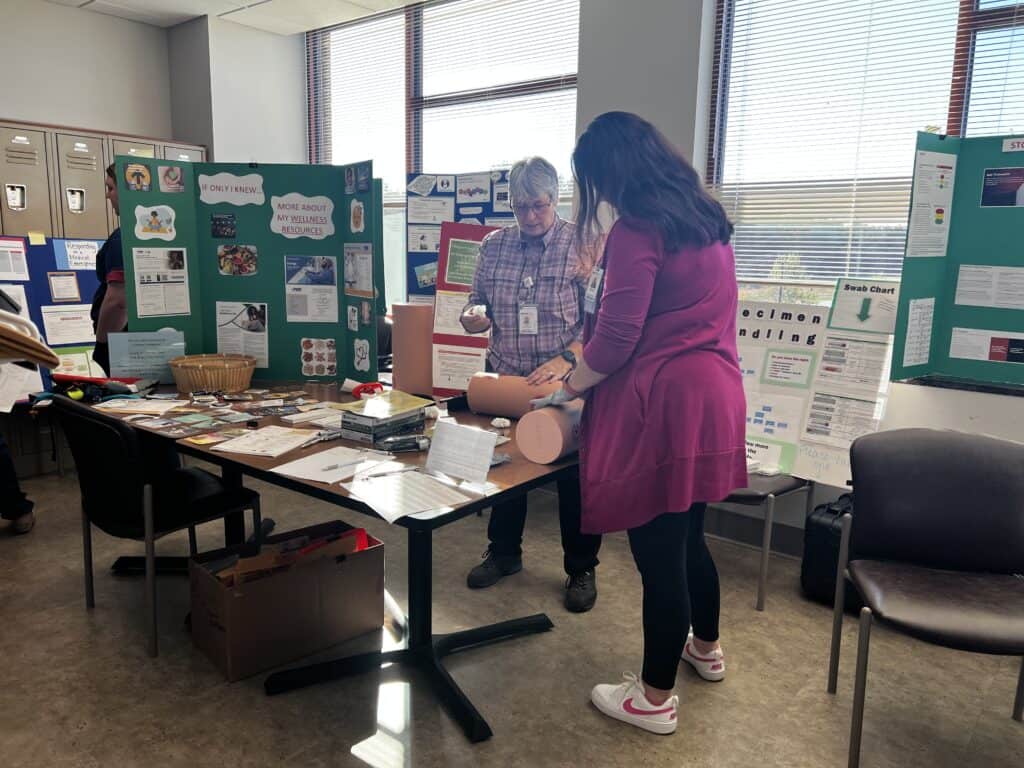
Though SSM has long provided Workplace Violence Prevention training, Luer said the increasing threat in recent years prompted a thorough assessment and opportunities for improvement.
In December 2023, Luer said SSM Health overhauled its workplace violence training and implemented AVADE – a comprehensive workplace violence prevention program that equips employees with de-escalation techniques, trauma-informed care, self-regulation strategies and methods for handling physically combative individuals.
This, she said, has reduced workplace violence incidents.
Trickle-down effect on patient care
Luer said when people think of quality care, it’s about receiving what they need, at the right time, in the right place and according to best practices.
To achieve that, she said teams must have what they need – which includes feeling safe.
“They have to feel safe, they have to be safe,” she said. “That is what allows them to be present in the moment and fully integrated in the care of the patients.”
Luer said if teams don’t hear leadership talk about safety, they don’t believe it’s a priority.
“So, to provide safe, affordable and correct care to patients, we have to have an environment that helps our teams function and reduces the cognitive burden because it’s a lot of psychological safety,” she said.
As with many things, Luer said employee-focused safety has a direct correlation to patient safety, where what is good for one is often good for the other.
Case in point: when participating in workplace violence prevention training, Luer said employees participated in conversations about how to manage a patient who could be combative coming out of anesthesia – some people, she said, can react differently and even violently to anesthesia.
Luer said one employee recounted their own experience of waking from surgery restrained and traumatized, so much so that they’re afraid to have surgery again in the future.
“If I knew the team knew that information and worked with me, I’d feel totally different,” the employee said. “People should have customized care that protects them and protects the team.”
Luer said that was a powerful moment because it revealed how safety solutions often need to be patient-centered and employee-centered simultaneously.
“We learned we need to provide care in a way that is safer for patients and our team so we can do the right thing for everybody,” she said. “We can work through that now.”
Proactive culture for the win
Though it can be easy for organizations to allow their safety and well-being efforts to slip into a reactive mode, or one simply focused on compliance, Luer said SSM Health has been very intentional to avoid that.
“We looked at our own trends and events over the past few years and decided to move firmly into the proactive space,” she said. “We know where those top areas are and focus on figuring out the root of what is happening, and that creates a different environment. When you become proactive, (you can) move into a different place.”
At the heart of the matter, Luer said, is to have a safe environment for everyone, which has natural alignment with SSM Health’s mission and resonates with employees.
“We strive to provide exceptional care for everyone, and we have done a lot of pouring into our teams because caring for them is caring for the community,” she said. “In many of our communities, we are among the largest employers.”
And, in many cases, Luer said SSM Health has become a destination employer as well, because prospective employees are aware of the lengths they go to regarding employee health and well-being.
“With our self-defense efforts, weapons detection units and other efforts, our people feel safer and more valued coming into work,” she said.
Per wisafetycouncil.org, the winner of the Workplace Safety Award in the Agriculture, Transportation, Utilities and Other category (small) award was Viking Gas Transmission Company out of Osceola and Chippewa Falls.
A full list of winners in other categories can be found on the council’s website.
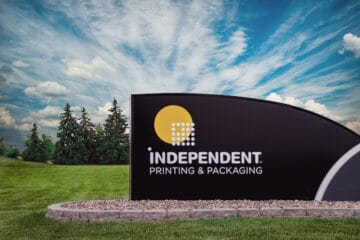 Hayes expands parent facility operations to better serve customers
Hayes expands parent facility operations to better serve customers ‘Growing’ into a new office location, company president
‘Growing’ into a new office location, company president

